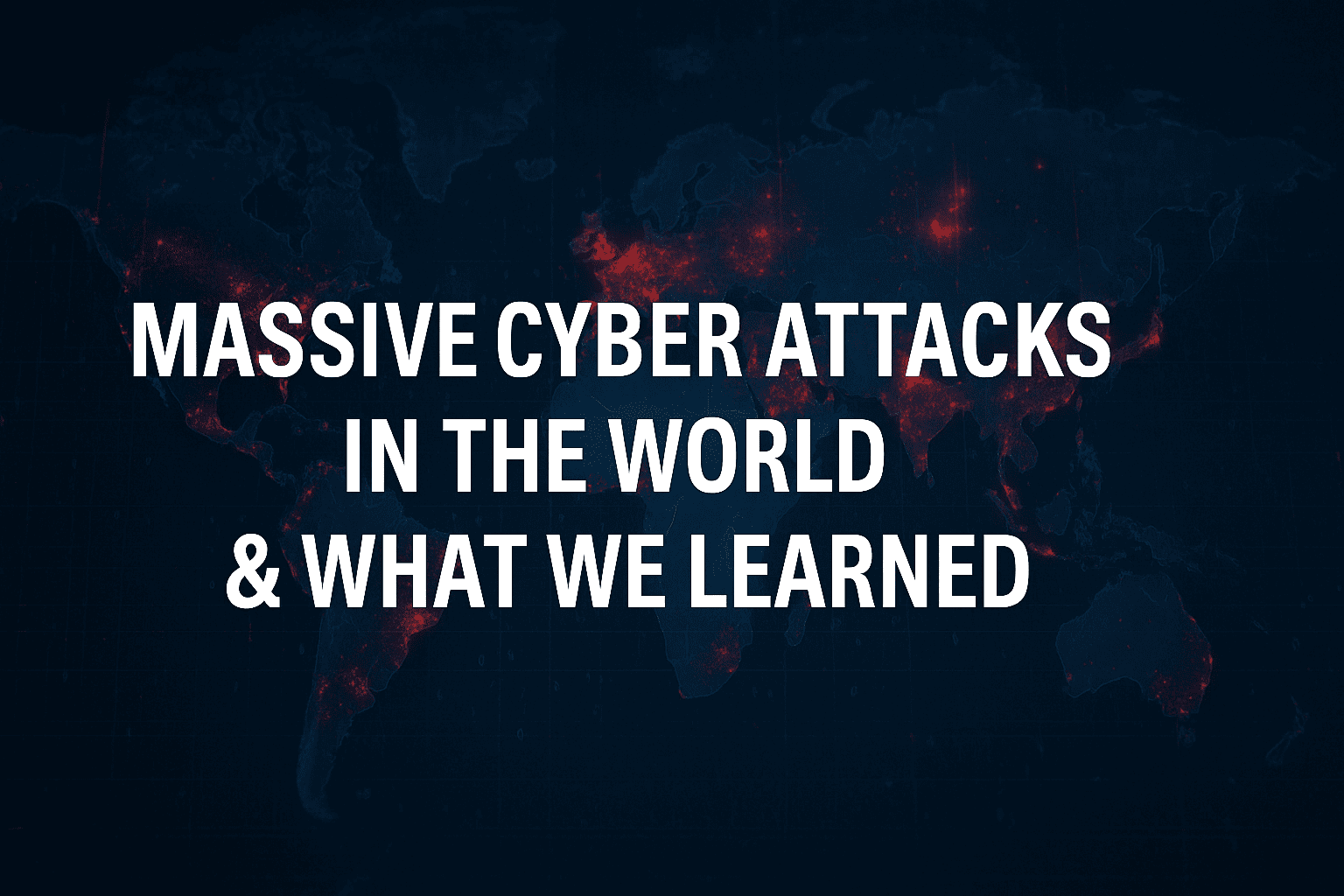We live in a digital world, where everything from our money to our personal memories is stored online. But with great convenience comes great risk. Cyber attacks have become one of the most dangerous threats of our time.
From government networks to hospitals and global companies, no one is safe from skilled hackers. In this article, we’ll explore the most massive cyber attacks in the world, when they happened, how they were carried out, and most importantly — what we’ve learned from them.
Understanding Cyber Attacks
A cyber attack is when someone uses computers or networks to steal data, destroy systems, or disrupt services. These attacks can be small and personal, like stealing your social media login, or massive and global, shutting down entire companies or even countries. Over the years, hackers have become smarter, tools have become more advanced, and the damage has grown much bigger.
The Largest Cyber Attacks in History
Let’s go back to 2017. A cyber attack named WannaCry spread like wildfire across more than 150 countries, locking users out of their personal computers where they demanded something in exchange for unlocking. In the UK hospitals were locked out of their systems and companies were blacked out completely. The attack took advantage of a vulnerability in Windows software which had not been patched because it was old.
At the same time, there was another attack, NotPetya. This attacked Ukraine and again the motivation was not money, it was clear this was intended to destroy. It was purposefully disguised as ransomware, however the intention was to erase data and create chaos. This attack swept the globe and caused companies to incur more than $10 billion in damages. This showed how cyber-attacks could be weaponized as acts of war.
One of the more shocking cases was from Yahoo, where it was discovered that over 3 billion user accounts were hacked between 2013 and 2014, in a single incident. Names, emails, passwords, were all taken from users and remains the largest data breach in history. People lost trust in online services all over the place. The Yahoo breach was the wakeup call for companies all over the place that they could not ignore security, or else.
In 2010, the world witnessed the first cyber weapon — a virus called Stuxnet. It secretly attacked Iran’s nuclear systems and damaged real, physical machines by sending them faulty digital commands. The virus didn’t just steal data — it broke machines in the real world. Experts believe it was created by powerful countries, showing that cyber warfare had truly begun.
And then there was the Equifax breach, where personal and financial data from over 147 million people was stolen because the company failed to fix a known software bug. The information stolen included Social Security numbers and birthdates, making it one of the most damaging attacks for individuals. It reminded the world that small mistakes in tech can lead to massive consequences.
Why These Attacks Happen
These attacks didn’t come out of nowhere. Most of them happened because systems were old, software was not updated, and companies didn’t take security seriously enough. Some were done for money, others for revenge, and some even for political power. What’s clear is that the world was not ready for the scale of damage these attacks caused.
What We’ve Learned From These Attacks
These incidents uncovered some hard truths. For example, we learned that updating software on a regular basis is more than just a good habit — it is a survival instinct. Most of these incidents were successful simply because a software update was late.
We learned that passwords are not enough. Multi-step verification, encryption, and stronger digital habits are a requirement. Several incidents occurred because of weak passwords, or it all started because one employee followed a harmful hyperlink.
Another key lesson is this: cyber attacks happen to everybody. This is not an issue just for governments and tech companies. If you use any part of the internet — because of shopping, or banking, or chatting — you are a target. This means we all need to be a little more vigilant when surfing the web.
So maybe the biggest lesson is this: cyber attacks are going to continue to occur, and they are only going to get worse. But if we treat cybersecurity as a serious matter — with strong systems, awareness, and quick action — we can reduce the impact and protect ourselves better.
Looking Ahead: The Future of Cybersecurity
As we step into the future, the war is moving more and more into the digital world. Hackers are using artificial intelligence to launch smarter attacks. They are targeting not just computers but also smart devices, like home assistants, cars, and even medical machines. We’re likely to see more battles between nations fought with code instead of bombs.
To protect the future, countries need better laws, companies need better systems, and people need better knowledge. Cybersecurity should be taught in schools. Businesses must have emergency plans. And most importantly, we must treat digital safety the same way we treat physical safety.
Read More:
Explore more tech updates here → Click here

